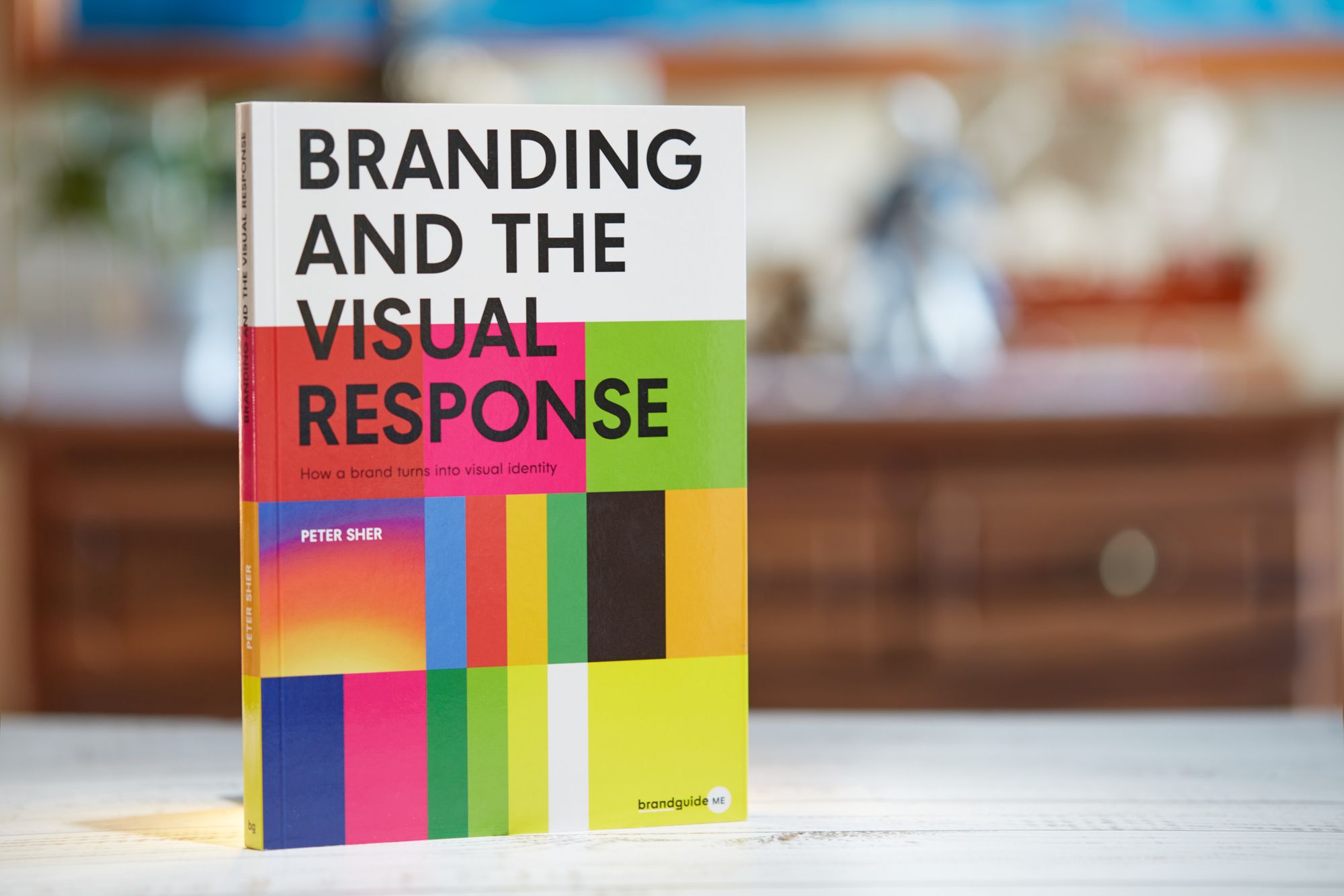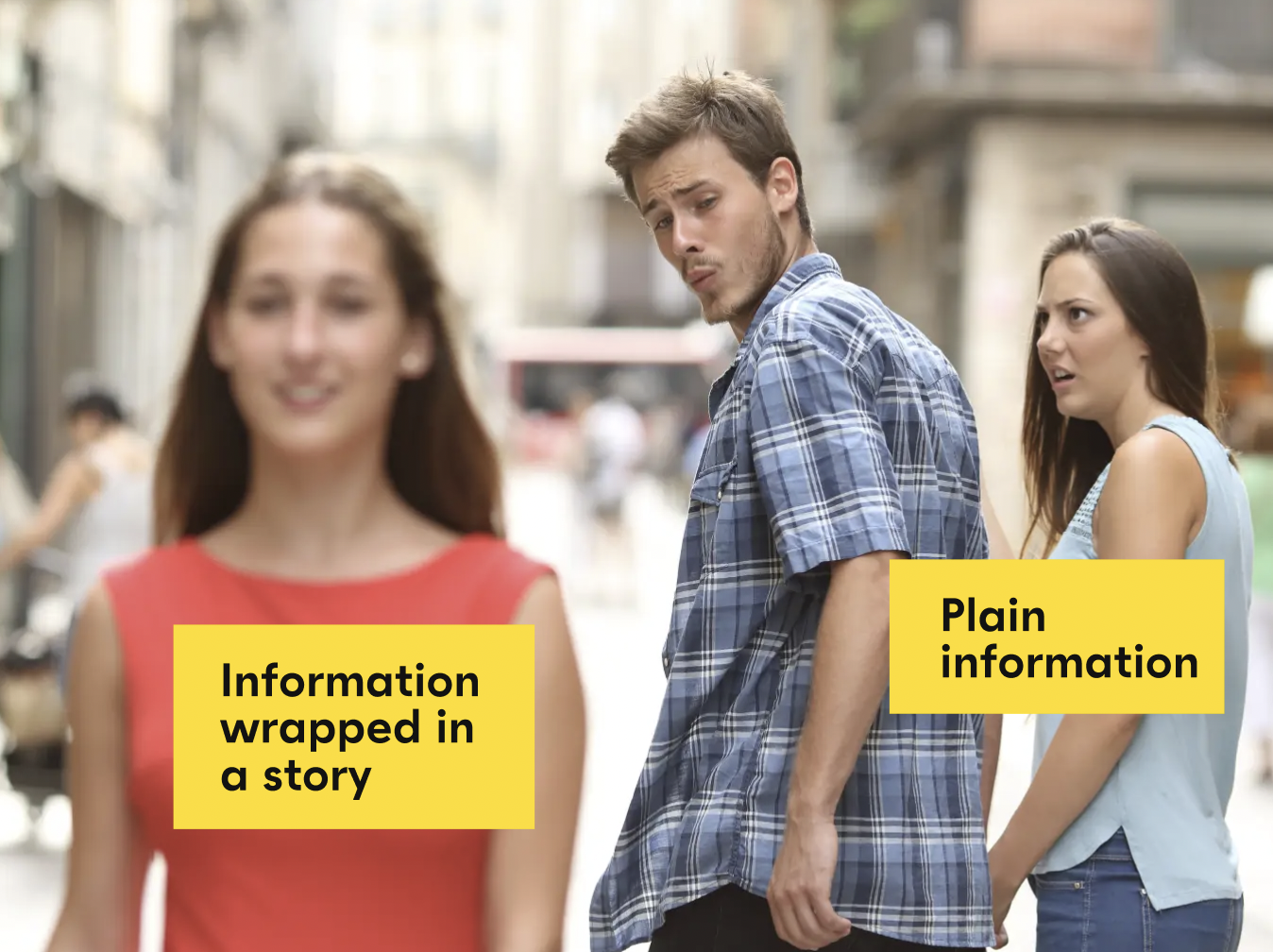Storytelling, branding and typography—what’s the connection?

The way to the audience’s heart is through good stories. These usually have 6 components (problem, hero, guidance, plan, implementation, success).
Stories establish connections. Brands that don’t use the power of storytelling pass up a great opportunity. Brand components and contents are less intriguing when there is no story.
When you do it right, a brand story will not only be a distinguishing factor, it will be an easy-to-remember element that attracts your audience and secures their commitment.
In this article:
- What is brand storytelling?
- What is the structure of a good story?
- How does a good story affect your audience?
- How are storytelling, branding and typography connected?
Branding and typography have a lot to do with the story.

How a brand turns into visual identity
Ready to elevate your design strategy? Get this must-have book in ebook or print format. Packed with practical advice, it’s your roadmap to becoming an elite designer who thinks strategically and builds unforgettable brands.
What is brand storytelling and more specifically brand storytelling?
With storytelling you can build a narrative and establish an emotional connection with the audience by conveying what you stand for and what value you provide to your clients.
A brand story is basically everything you do and every reason why you do it. (As such, it has a considerable effect on branding and visual branding processes, too.)
It connects the story, the mission, the motivation, goals, audience and raison d’être of the business.
The key: the brand story must be something bigger than the products and/or services of the company.
You must create a narrative your potential customers, colleagues and followers want to be a part of.
What makes a good story?
You need 3 things basically:
- It must raise and focus attention.
- It must generate feelings.
- It must establish a connection.
Storytelling has been a central part of human life since the beginning of time. Sharing experiences while sitting around the fire was essential for avoiding danger. (And of course it was good fun.)
And it hasn’t changed over the course of history, we still learn a large part of what we know through stories.

How to do it effectively? What makes a good (brand) story?
The structure of stories (the 6 elements of a good story)
If you look at some good stories, from a Walt Disney animated movie to a brand story, you see that truly engaging stories have 6 essential components.
- Problem
- Hero
- Guide (helping the hero solve the problem)
- Plan
- Implementation
- Success
1. Problem
A previously well-functioning world order is disrupted by a problem that must be solved. This is what drives the story. This is the point around which every character, plotline and viewpoint of the story revolve.
And this is the problem that calls for a hero.
2. Hero
The hero must solve the problem that has come up. This is your client, your customer.
The twist in the story is that the hero usually can’t solve the problem alone.
They need help. This is where the brand comes in.
3. Guidance
A good guide (e.g. Yoda to Luke, Alfred to Batman) can provide guidance and support to the hero so that they can overcome the obstacles.
This guide is the brand that knows the recipe, the method, the secret weapon, the location of the treasure etc. and can help deal with the problems coming up.
Of course, guidance in itself can’t guarantee success.
4. Plan
In order for the hero to overcome the challenges, they need to act on the advice of the guide and follow a viable plan.
This can be an exercise programme, therapy sessions or the implementation of a new method or tools. The main point is to model how you can get from the current state to the desired state.
5. Implementation
A good plan is not enough, it must be implemented. The story must also cover how the hero tackles the obstacles using a plan and the tools they are given.
6. Success
Finally, you must describe the state of success. A vital element of the story is to make the transformation of the hero (the customer) from the beginning to the end of the story relatable.
Now that we know how a good story is structured, let’s take a look at the different types of stories.
Types of brand stories
Views differ as to what exactly the classification of brand stories should be based on.
One of the most commonly used classifications uses 7 types of stories:
- Origin stories
- Corporate culture stories
- Customer stories
- Challenge stories
- Community stories
1. Origin stories
Origin stories usually tell you about how the brand, a product or a service was started.
Such stories include the story of Barbie dolls or when you talk about the mission that inspired the creation of the brand.
2. Corporate culture stories
They have the most significant effect in employer branding. Usually a corporate culture story describes how employees at a certain companies feel.
What are the values of the brand and how are these manifested in everyday operation?
3. Customer stories
If you take a problem your brand can help with and present it through the eyes of a specific customer, it is much easier to build the trust of potential customers.
Customer stories work especially well in testimonial videos. But mostly it is enough to talk about what problems your customers must face every day and how you can help them with that. Educational stories can be mentioned here, too.
4. Challenge stories
They are especially effective in crisis situations, but work well anytime. A challenge story shows how the organisation deals with obstacles—both small and big, internal and external.
Stories where business owners talk about their failures and about starting over are especially relatable.
5. Community stories
These stories usually present how the brand honours its commitments and how it is supporting the community.
These brand stories are usually centred around some charity or social responsibility commitment.
In my presentation ‘Story in the story’, which you can find in this article, I provide specific examples of brand stories.
Based on the above, it is now probably clear how storytelling and branding are connected.
But we still have an important question to answer.
Where does typography come in?
‘95% of the information on the web is written language.’
— Oliver Reichenstein (founder of ia.net)
I can’t guarantee you that this figure is correct. However, it is not the exact figure, but the order of magnitude that counts.
It’s a fact that there is plenty of text on the internet.
If there is a lot of text, you need typography.
If you write about a story, you need a typography system.
It’s not an exaggeration to say that the fonts turn the sentences into stories. (This is what I refer to as ‘Story in the story’.)
Fonts, layouts and the like add another layer to the story.

Immersing yourself in a story—the secret ingredient
If you remember the shape of your spoon at lunch, it has to be the wrong shape. The spoon and the letter are tools; one to take food from the bowl, the other to take information off the page… When it is a good design, the reader has to feel comfortable because the letter is both banal and beautiful.
— Adrian Frutiger
If consuming the story is not a struggle, the typography is good.
Of course this is only true if your goal is for typography to create a good flow of reading.
Just like there are appropriate spoons, there are various fonts that support proper consumption.
You know what you want to achieve with the text, the task is to find a suitable font for that.
If you want to dig deeper into this topic, check out the article typography—meaning and the basics that explores it in detail. Here you can find everything you may need to find or create the suitable font.
Summary
The way to the audience’s heart is through good stories. These usually have 6 components (problem, hero, guidance, plan, implementation, success).
Selecting the proper story type is also essential. Here you have 5 options:
- Origin stories
- Corporate culture stories
- Customer stories
- Challenge stories
- Community stories
But don’t forget that typography that makes the story easier to consume is just as important as a coherent story structure, appropriate context and narrative.
If you want to use Brand Sprint, visit our resources page, it provides you a free PDF guide to learn it—and perhaps use it in your next project, adding value to your services, or by our book which is a step by step guide to branding 👇

How a brand turns into visual identity
Ready to elevate your design strategy? Get this must-have book in ebook or print format. Packed with practical advice, it’s your roadmap to becoming an elite designer who thinks strategically and builds unforgettable brands.
